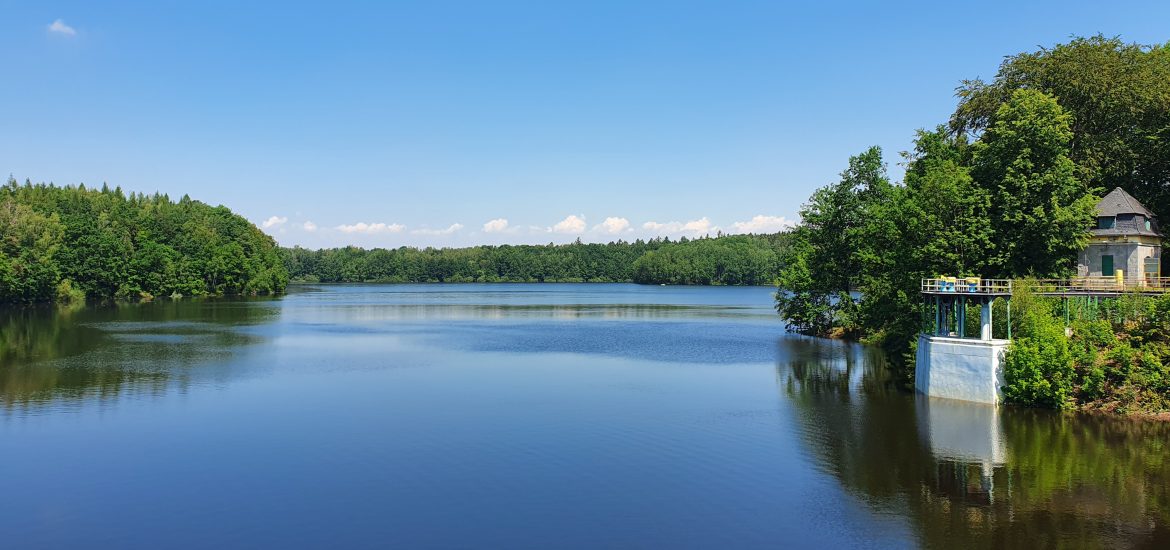I was learning about the shotcrete technology – the use of concrete pneumatically projected – to renovate hydrotechnical objects, on the example of the City Lock No. 2 in Bydgoszcz five years ago. It was very demanding topic due to the 100-year old construction which showed to the participants of the investment process its actual technical condition after dewatering which resulted in increased the scope of the works. It was very labor-intensive adopting the design solutions for such a large object. The most of my time took me drawing of reinforcing mesh for walls, bottom slabs, circulation channels, etc., so elements that increase the bond and tensile strengths of concrete of restored surfaces, necessary for the technology. I preferred to be on site instead of preparing more construction details and material lists. I was looking forward to invitations to the in-site meetings. I didn’t mind traveling over 250 km to face the current technical problems of the contractor on one hand and to see how the shotcrete technology was implemented on the other. I wasn’t allowed to participate in practical classes despite my willingness and requests. I had to remain a passive onlooker from the distance.
My experience gained in historic hydrotechnical objects renovation enriched my technical knowledge. Restoring locks in Bydgoszcz and Przegalina taught me that bringing back the splendor to an existing object is much more difficult task than designing a new structure.
I accidentally found out about the renovation of the dam on Leśniańskie Lake at the end of this year’s Spring a few weeks before planned completion of construction works. I don’t know how I missed information about this task. Funny, because I had the opportunity to admire the dam from the SUP board in September 2019. The water level in the lake was low then. A month later it was another 5 m lower due to the beginning of renovation works.
Also in this case, the scope of work increased after partial emptying the reservoir. Also here the shotcrete technology was used for the renovation of the water side of the dam’s wall. Multi-level scaffoldings anchored to the structure provided free access to the construction. The preparatory works included cleaning the wall from the existing facing layer and removing loose elements. Reinforced mesh was anchored first to the and wall next which was covered with a layer of shotcrete having properties preventing water penetration at the last stage.
I wouldn’t be myself if I missed such investment. I chose the last weekend of June to visit the dam. I was traveling to Leśna being reconciled with the fact that I would see works already done. I also prepared myself mentally for the dramatic view of the “dry” lake.
I was surprised twice when I got to the place. For the first time in the parking lot of the Camping Plaża Czocha resort from where I saw Leśniańskie Lake occupied by sunbathers and enthusiasts of water sports. I couldn’t believe that the rainfall lasting two weeks supplied the reservoir so much. The water level was higher than during my previous visit. I was glad that tourism in the area revived and the local resorts don’t have to face another problem – drought. So I could jump on SUP although I didn’t plan it.
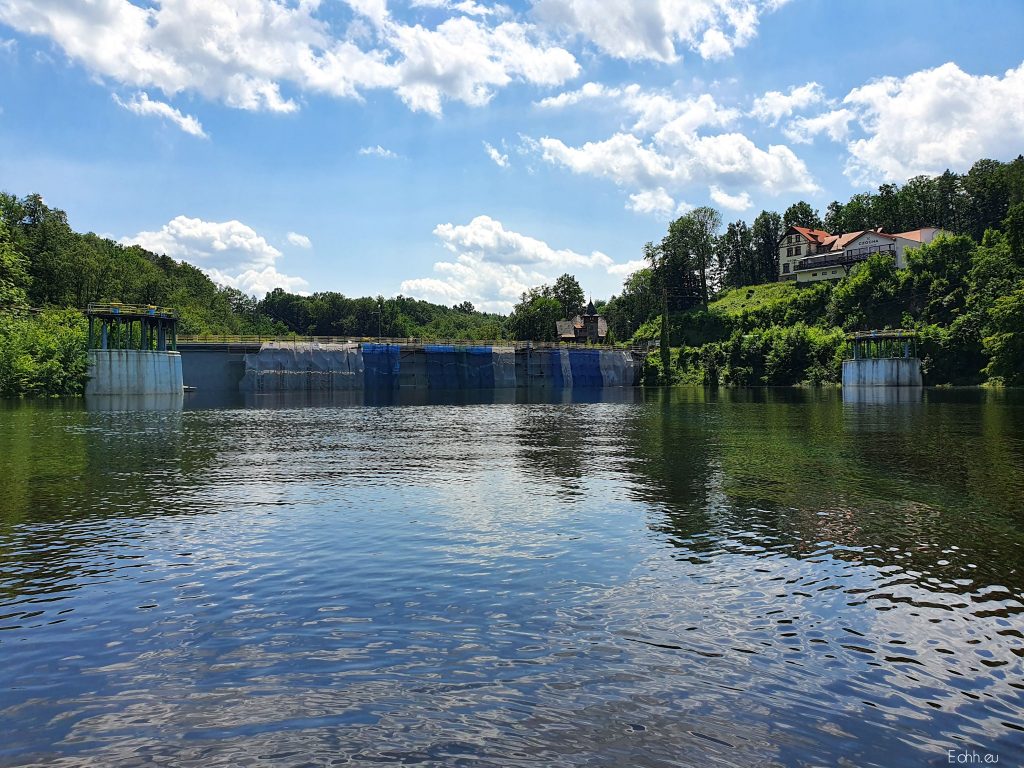
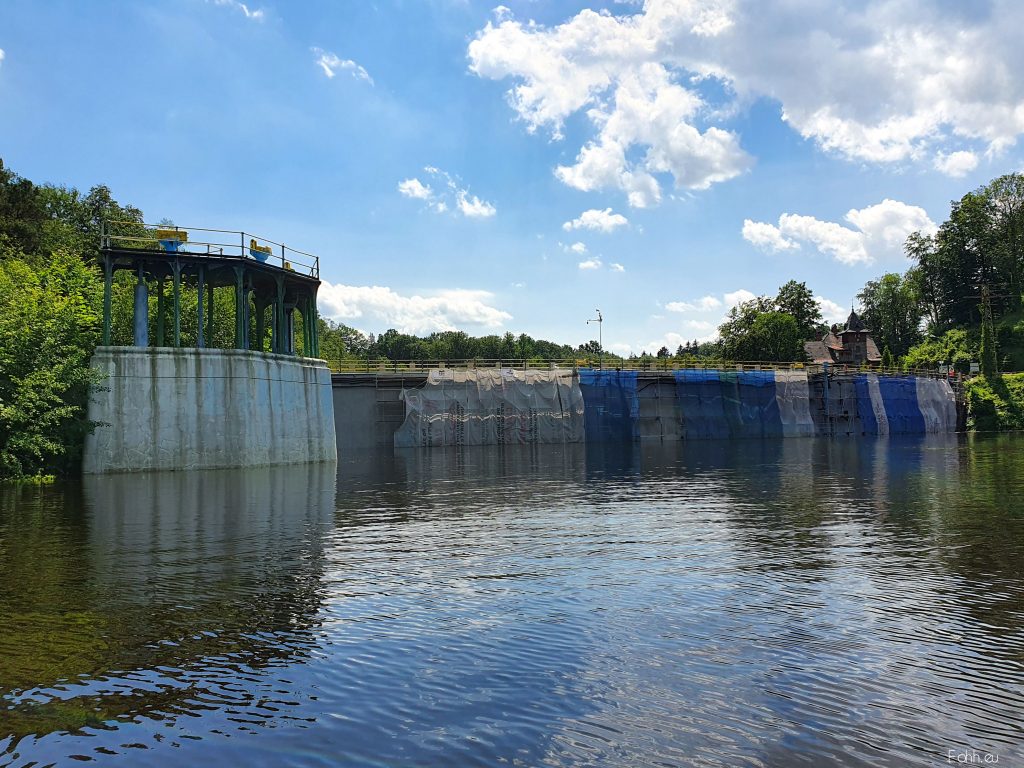
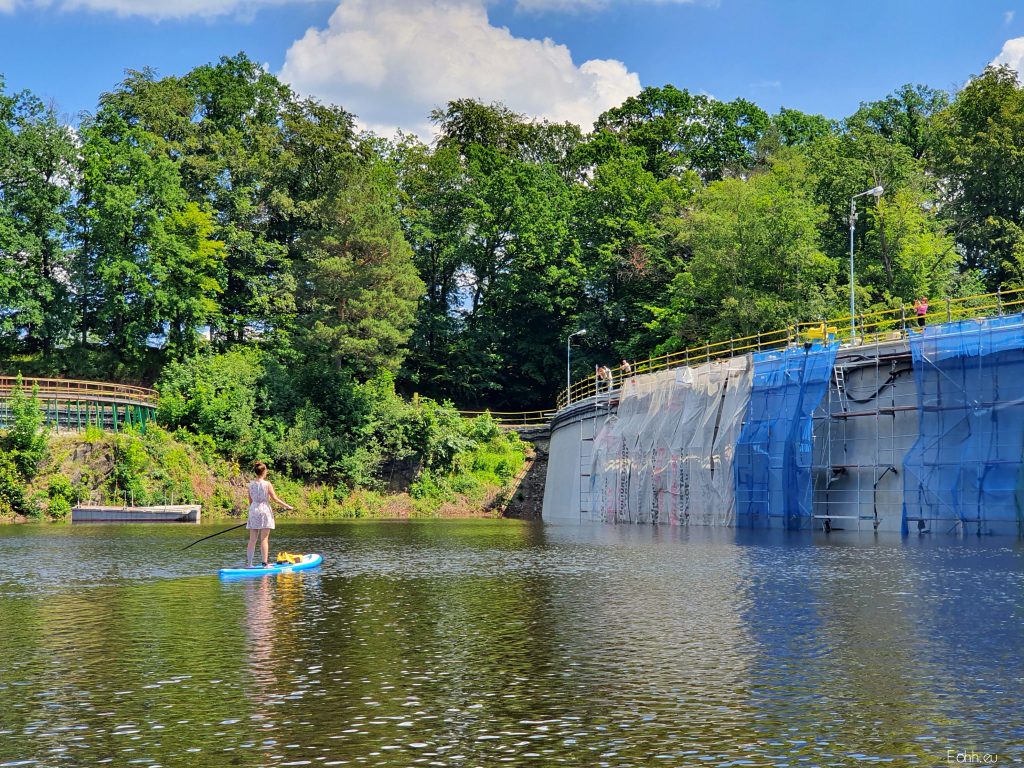
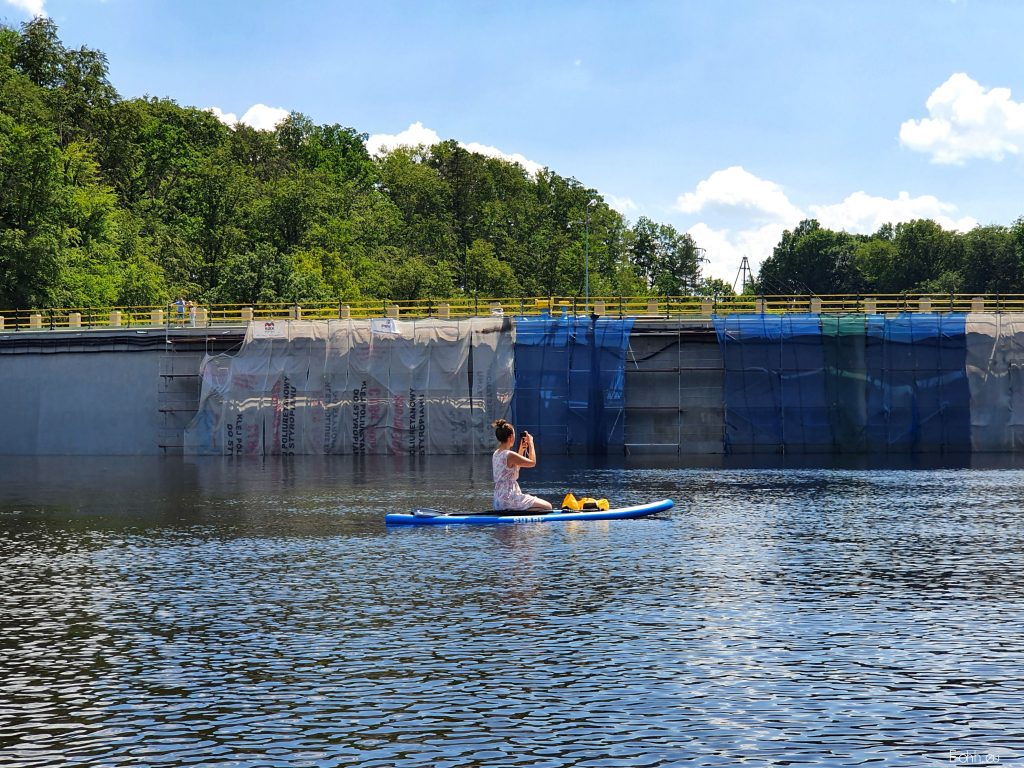
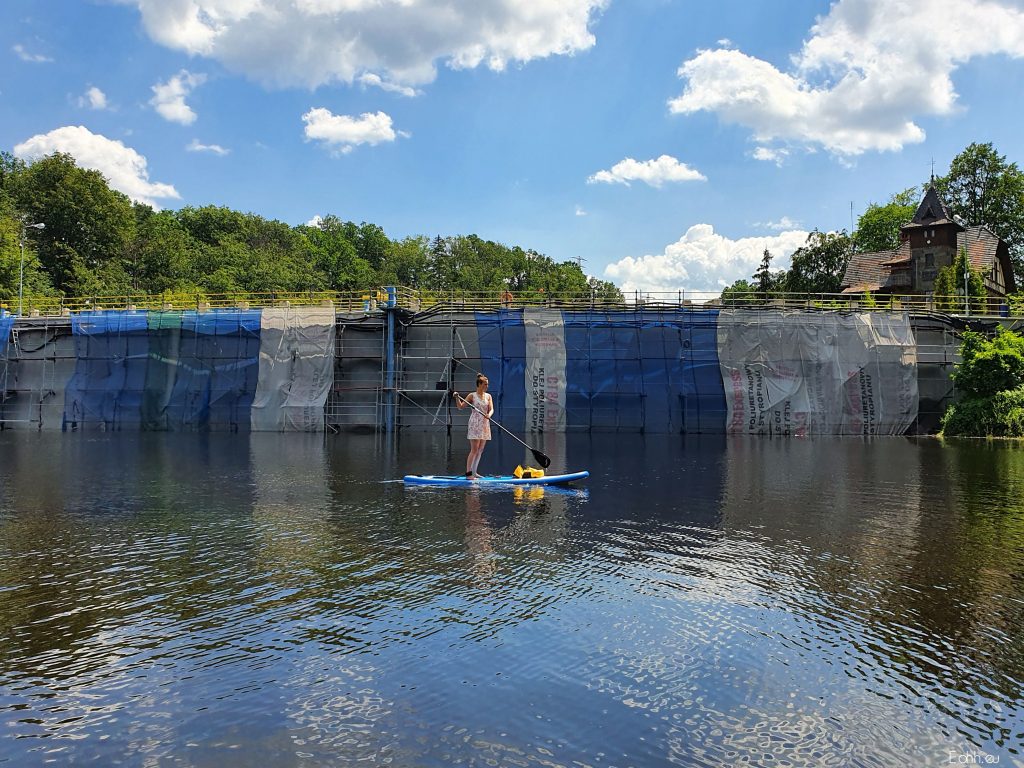
I didn’t expect the dam wouldn’t be put into use on time. The wall remained hidden behind the shuttering. Half of them were sunk due to the high water level in the lake. Consequently the works must have been suspended.
When will it start again – I don’t know.
Now, I took advantage of the opportunity to have reminding lesson about the renovation of hydrotechnical objects by shotcrete method. It was worth coming there.
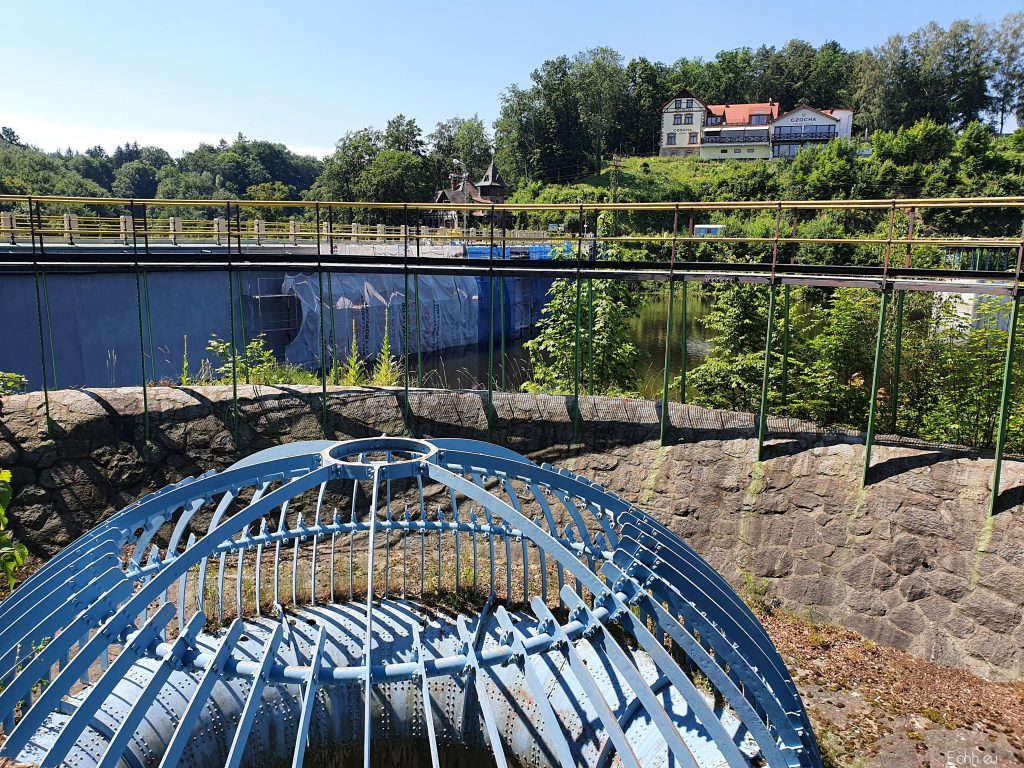
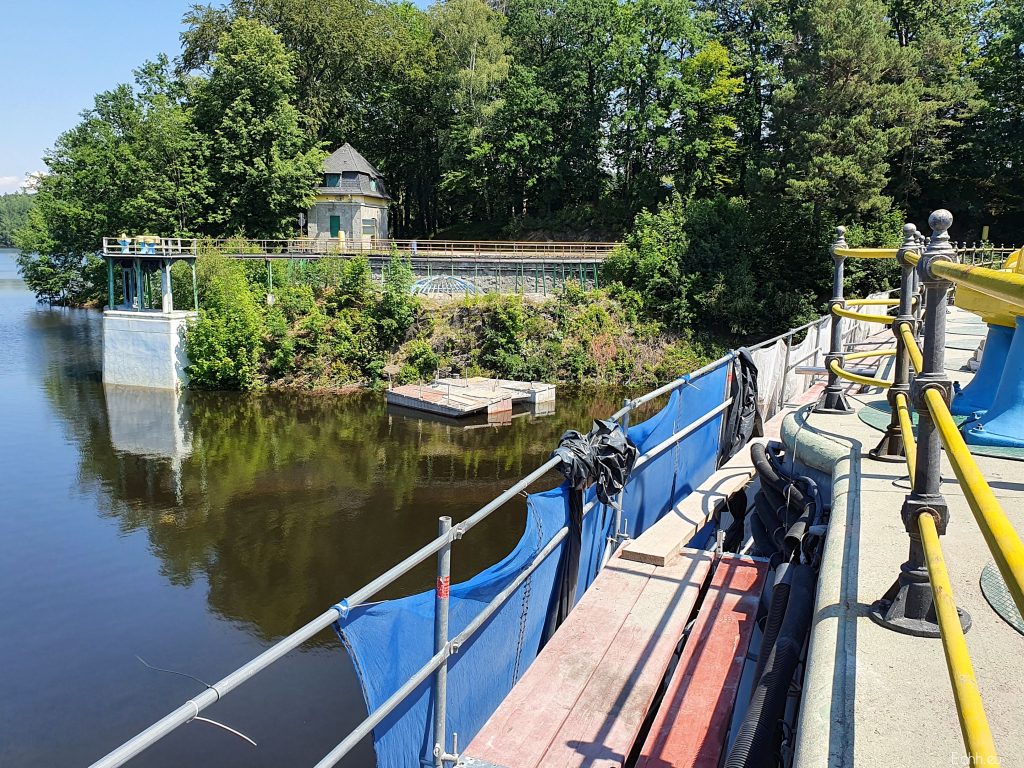
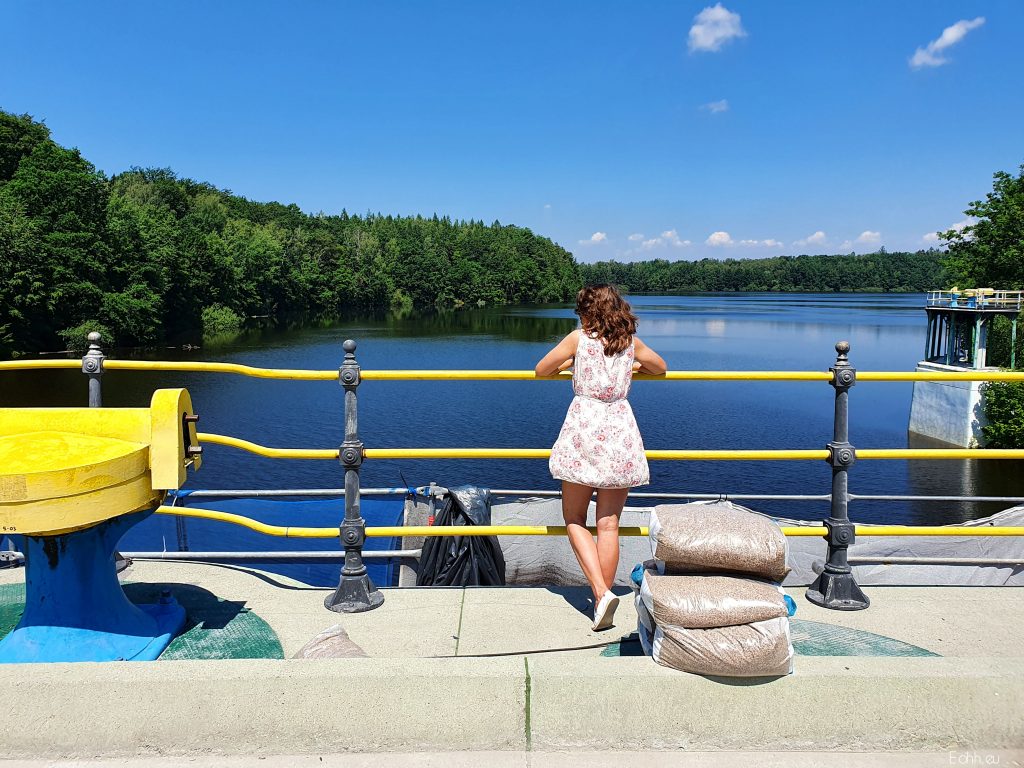
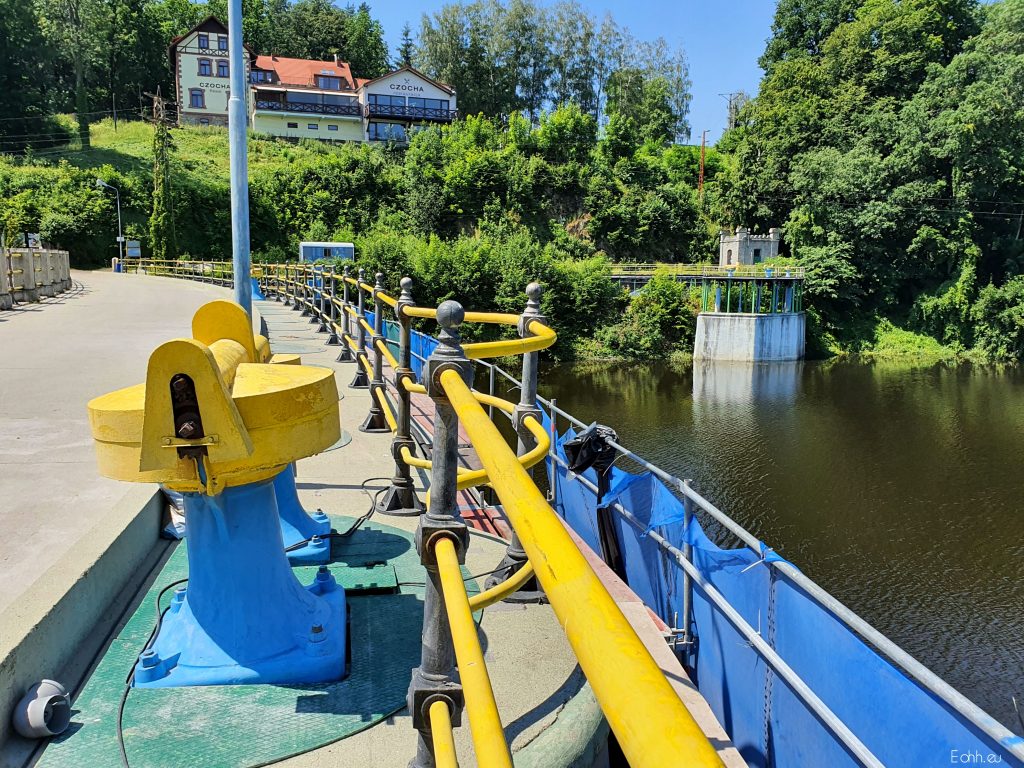
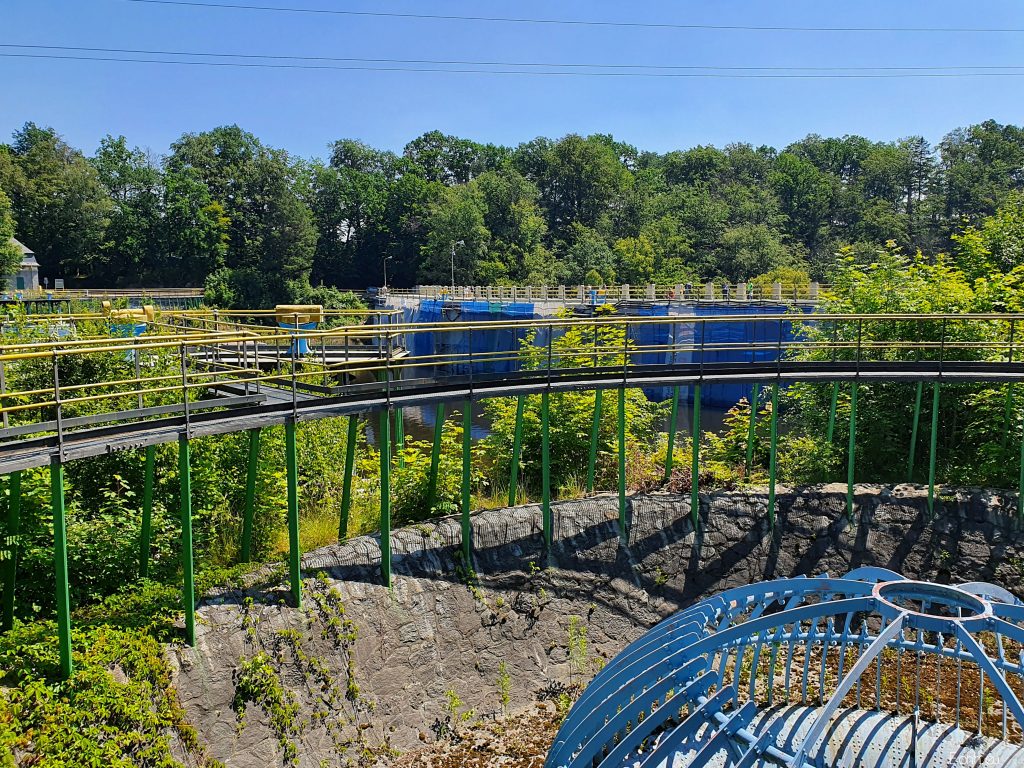
Another dam to restore is that one on Pilchowickie Lake. But easy it will come about next year.
